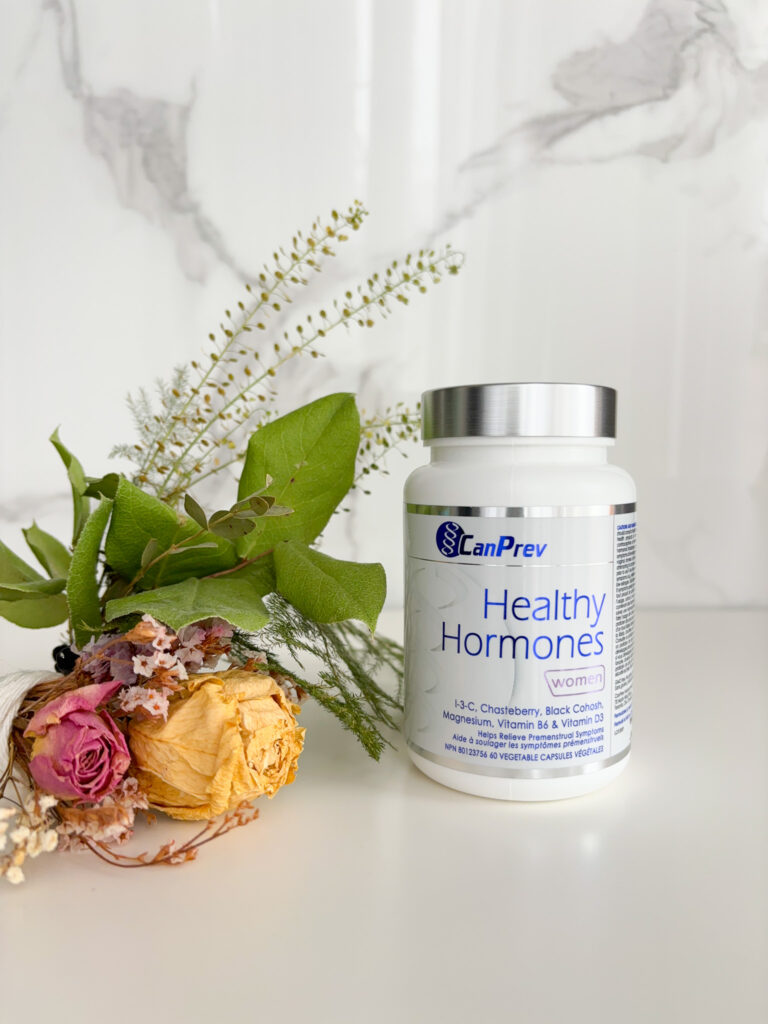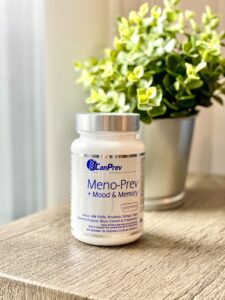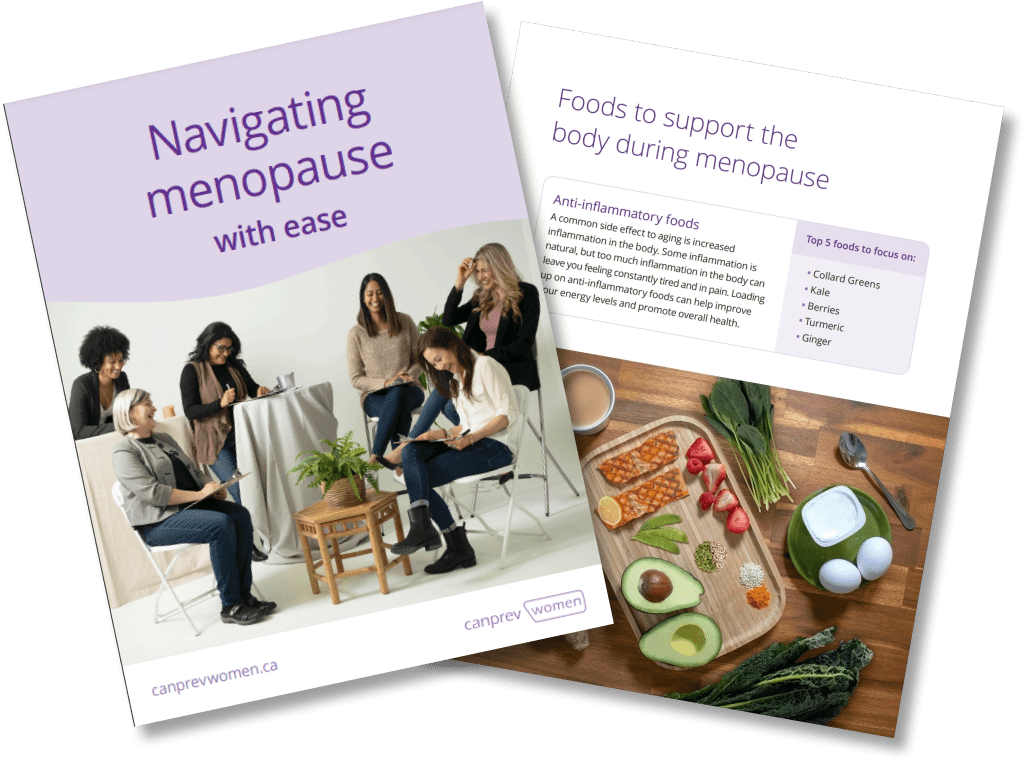What if the secret to balanced health was hidden in the plants you eat every day? Meet phytoestrogens, nature’s fascinating compounds that mimic estrogen in the body. Phytoestrogens can benefit our health in a number of ways from balancing hormones to supporting heart health and even alleviating menopausal symptoms. Found in many of the foods and herbs we consume daily, phytoestrogens have sparked both excitement and debate.
Curious to know more? Let’s explore what phytoestrogens are, where to find them, and how they can benefit your health.
Estrogen insights
Estrogen is a sex hormone present in both males and females, with higher levels in females. It’s responsible for the development and regulation of the female reproductive system and secondary sexual characteristics, such as breast and pubic hair development. While estrogen is especially important for reproductive health, it also plays an important role in keeping bones strong, hearts healthy, brains sharp, and skin and hair vibrant.
There are three main types of estrogen:
1. Estradiol – the primary form of estrogen present in the female body during the reproductive years. It’s considered the most potent form of estrogen. While both males and females produce estradiol, women have much higher levels.
2. Estrone – This type of estrogen is present in the body after menopause. Less potent than estradiol, the body can convert estrone to other forms of estrogen, as necessary.
3. Estriol – The weakest form of estrogen (as it binds less strongly to estrogen receptors in the body as compared to estradiol and estrone), is primarily present during pregnancy. It helps the uterus grow and prepares the body for delivery.
What are phytoestrogens?
Phytoestrogens derive their name from “phyto,” the Greek word for “plant”. These plant-derived compounds are structurally similar to estrogen, which results in their ability to mimic or modulate the effects of estrogen in the body. However, phytoestrogens are less potent than the estrogen our bodies naturally produce, approximately 1/1,000 to 1/10,000 weaker.
How do they work?
Phytoestrogens work by binding to estrogen receptors, with the ability to boost estrogen activity when it’s low, or temper it when it’s high. Estrogen receptors are proteins found inside cells that respond only to the hormone. They are like locks that only estrogen can fit into.
These receptors are present in various tissues, including the breast, uterus, bone, liver, and brain. When estrogen (or in this case phytoestrogen) enters the bloodstream, it searches for cells with estrogen receptors. Estrogen fits into these receptors like a key into a lock and this binding is what activates the receptor. Once activated, estrogen receptors send signals inside the cell. These signals tell the cell to start or stop certain activities, such as growing, producing proteins, or regulating genes.
Phytoestrogens, by binding to these receptors, can modulate estrogen activity in the body, potentially helping to manage hormonal balance.
How do phytoestrogens both lower and increase estrogen?
This might seem like a bit of a trick question at first, but the key to understanding this effect is by focusing on how phytoestrogens interact with estrogen receptors. Think of phytoestrogens as musicians in an orchestra, adjusting the intensity and balance of estrogen activity via these receptors.
Low estrogen levels (sparse orchestra)
In a sparse orchestra with low estrogenic activity, not all instruments (estrogen receptors) are playing. Phytoestrogens act like additional musicians who pick up instruments and start playing, filling the gaps in the music, increasing estrogen activity and enriching the overall sound of the orchestra.
If someone has low estrogen levels, they may not be able to fill all their estrogen receptors. Phytoestrogens can step in and activate these receptors, mimicking estrogen’s effects. This helps increase estrogen activity in a gentle way, which can help to ease menopause symptoms like hot flashes.
High estrogen levels (full orchestra)
Now, imagine a full orchestra with many instruments playing loudly (high estrogen levels). Most instruments (estrogen receptors) are already playing, creating a rich and loud sound (strong natural estrogen signals). Phytoestrogens are like additional musicians who join the orchestra with softer instruments. Because their instruments are softer, they produce weaker estrogenic effects, which in turn contributes to balancing the overall sound of the orchestra and reducing the estrogenic intensity.
If someone has high estrogen levels, every receptor might already be filled, leading to excess estrogenic effects. Phytoestrogens can still bind to these receptors, but they act in a less potent way than natural estrogen. By occupying some receptors with weaker signals, phytoestrogens can dilute the concentration of strong estrogen signals, decreasing the overall estrogenic effect.
This modulation can help balance estrogen levels without adding to the total estrogen load. By doing this, phytoestrogens can help manage and prevent estrogen dominance, which can cause problems like heavy and painful periods, PMS, endometriosis, uterine fibroids and hormonal acne.
Types of phytoestrogens
The most common types of phytoestrogens include isoflavones, lignans, and coumestans:
- Isoflavones, such as genistein and daidzein, can bind to estrogen receptors and can have weak estrogen-like effects. In low-estrogen environments (such as post-menopause), they can help alleviate symptoms like hot flashes. In high-estrogen environments, they can potentially block stronger estrogens from binding to receptors.
- Lignans are converted by gut bacteria into metabolites called enterolignans, which have weak estrogenic and anti-estrogenic effects. They can help balance estrogen levels in the body.
- Coumestans can also bind to estrogen receptors and exhibit weak estrogen-like activity. They can help in managing estrogen levels by either mimicking estrogen or blocking its stronger effects.
Health benefits of phytoestrogens
These plant-derived compounds can play a significant role in supporting various aspects of our health and well-being. Here are some key benefits:
Menopausal symptom relief
One of the most celebrated benefits of phytoestrogens is their ability to alleviate menopausal symptoms, which is due to their ability to manage estrogen imbalances. Many women experience hot flashes, night sweats, vaginal dryness and mood swings as a result of declining estrogen levels during menopause. Phytoestrogens can help moderate these symptoms by providing a mild estrogenic effect. By acting as a weaker form of estrogen, phytoestrogens can compensate for the body’s reduced production of natural estrogen, providing a more balanced hormonal environment.
Bone health
As we age, maintaining bone density becomes increasingly important to prevent osteoporosis and fractures. Phytoestrogens can help in this area by mimicking estrogen, which plays a critical role in bone health, particularly in postmenopausal women.
Estrogen regulates the balance between bone formation by osteoblasts and bone resorption (the process where the body breaks down old bone tissue) by osteoclasts. During menopause, when estrogen levels decline, bone loss increases significantly. However, research shows that phytoestrogens (mainly isoflavones) may exert their bone protective effect by inhibiting bone resorption and promoting bone formation.
Heart health
Phytoestrogens, particularly those found in soy, have been shown to support cardiovascular health. They can help lower LDL (bad) cholesterol levels and increase HDL (good) cholesterol levels, which reduces the risk of heart disease. Additionally, phytoestrogens can improve the elasticity of blood vessels, enhancing overall blood flow and reducing blood pressure. Studies show that women who consume high amounts of phytoestrogens, particularly isoflavones in soy products, are less likely to develop cardiovascular disease, breast and uterine cancer and experience menopausal symptoms than those following Western diets.
Cancer prevention
While there is still much debate surrounding this topic, research suggests that phytoestrogens might have a protective effect against certain types of cancer, particularly breast cancer. By binding to estrogen receptors, phytoestrogens can block the stronger natural estrogen from attaching to these receptors, potentially reducing cancer cell growth. Some studies indicate that persons with high dietary intake of phytoestrogens, have lower incidences of these cancers.
Many phytoestrogens also possess antioxidant properties which help to neutralize free radicals (unstable molecules) that can damage cells and DNA, potentially leading to cancer. By reducing oxidative stress, phytoestrogens may help protect cells from becoming cancerous.
Skin health
Phytoestrogens have been studied to have an anti‐aging effect on the skin via estrogen receptors. Estrogen helps maintain skin thickness and moisture, and as levels decline with age, our skin can become dry and thin. Phytoestrogens can help mitigate these effects by promoting collagen production and improving skin elasticity and hydration, leading to healthier, plumper skin.
Where can you find phytoestrogens?
You might be eating phytoestrogens more often than you think. Here’s where they’re commonly found:
- Soy products: Tofu, tempeh, soy milk, and edamame.
- Legumes: Beans, lentils, and chickpeas.
- Whole grains: Barley, oats, and wheat.
- Fruits and vegetables: Berries, apples, carrots, broccoli, cauliflower and yams.
- Nuts and seeds: Particularly sesame and sunflower seeds.
- Flaxseeds: A top source of lignans.
Herbal Sources of Phytoestrogens
Certain herbs are also packed with phytoestrogens. Let’s take a closer look:
- Red clover: Loaded with isoflavones, this herb is a phytoestrogen powerhouse.
- Licorice root: Known for its strong phytoestrogenic compounds, licorice root also contains high amounts of isoflavones.
- Hops: This is the stuff found in your beer! Hops are rich in a type of phytoestrogen called flavonoids.
- Black cohosh: Often used to relieve menopausal symptoms, black cohosh is a perennial herb native to North America, known for its phytoestrogenic properties.
- Chaste berry: Characterized as a flavonoid, chaste berry has been traditionally used to relieve premenstrual and menopausal symptoms due to its phytoestrogenic effects.
Things to consider before incorporating phytoestrogens into your diet
While phytoestrogens offer a variety of health benefits, the effects of these compounds can vary from person to person. Factors such as age, sex, overall health and lifestyle choices can influence how phytoestrogens affect our bodies. Here are a few things to keep in mind when it comes to phytoestrogens:
- Consuming large quantities of phytoestrogens may affect fertility. Studies show that phytoestrogens may inhibit ovulation by reducing circulating levels of luteinizing hormone.
- Some studies have found that isoflavones can contribute to an underactive thyroid in people who already have an iodine deficiency.
- If you are pregnant or breastfeeding, consult with your healthcare practitioner before consuming large amounts of phytoestrogens.
- If you are currently undergoing hormone replacement therapy, consult with your healthcare practitioner before incorporating phytoestrogens into your diet.
Plant-powered supplements
Quality supplements can help to ensure that you receive a safe and effective dosage of nutrients, including phytoestrogens, that align with your health goals. If you’re looking for a more convenient way to incorporate phytoestrogens into your routine, supplements can help:
CanPrev’s Healthy Hormones is an all natural formula designed to help balance menstrual cycle irregularities, relieve PMS and address issues related to estrogen dominance. It contains a clinically significant 400mg daily dose of indole-3-carbinol alongside chasteberry, magnesium, black cohosh, and vitamins B6 and D3.
Meno-Prev + Mood & Memory is an all natural formula designed to provide relief from menopausal symptoms like hot flashes, night sweats and nervous tension. It also supports subtle changes in mood, memory and libido. This herbal combination is formulated with maca extract, milk thistle, ginkgo biloba, black cohosh and chasteberry extract.
Chasteberry and black cohosh have traditionally been used for their ability to treat menopausal and PMS related concerns, due to their phytoestrogenic characteristics.
Harnessing the power of plants can significantly impact our health, and phytoestrogens are a prime example of this. These compounds, found in our everyday foods and herbs, offer a natural way to balance hormones, support heart and bone health, and alleviate menopausal symptoms. Are phytoestrogens the right fit for your health journey? Take a moment to reflect on your health goals and consider how incorporating phytoestrogens might support you along the way.
Sources:
Lignan
Coumestan
Phytoestrogens
Isoflavones
Luteinizing Hormone
Osteoblasts and Osteoclasts
Cholesterol: Good, Bad – Which Is It?!
What are the signs of iodine deficiency
Phytoestrogens and cardiovascular health
Phytoestrogens: Good or Bad for Hormones?
What is hypothyroidism (underactive thyroid)?
The role of micronutrients in thyroid dysfunction
Phytoestrogens for Cancer Prevention and Treatment
Flavonoids as Phytoestrogenic Components of Hops and Beer
Cholesterol and women’s heart health: What you need to know
Recent advances in the anti‐aging effects of phytoestrogens on collagen, water content, and oxidative stress
Dietary phytoestrogen intakes of adult women are not strongly related to fecundability in 2 preconception cohort studies
Effects of phytoestrogens on bone mineral density during the menopause transition: a systematic review of randomized, controlled trials




